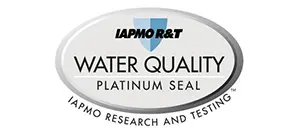Reverse osmosis (RO) systems have earned a gleaming reputation in water filtration.
Reverse osmosis (RO) systems have earned a gleaming reputation in water filtration. They’re marketed as the gold standard—the ultimate solution for pure water. But like many technologies that promise perfection, the reality is considerably more nuanced. While RO certainly has legitimate applications, there are profound reasons to pause before installing one of these systems in your home. Let’s pull back the curtain on what the glossy brochures don’t emphasize.
The Mineral Depletion Problem: When “Too Clean” Becomes Unhealthy
Stripping Water of Its Natural Benefits
RO filters operate with extreme prejudice. They employ semi-permeable membranes with pores so microscopic (approximately 0.0001 microns) that they block virtually everything except water molecules. Yes, this includes harmful contaminants like lead, arsenic, and pesticides—but it also significantly reduces something vital: essential minerals your body relies on daily.
The filtration process aggressively strips away:
- Calcium (critical for bone health and nerve function)
- Magnesium (involved in over 300 enzymatic reactions in your body)
- Potassium (essential for heart rhythm and muscle function)
- Zinc (crucial for immune function and DNA synthesis)
- Selenium (a powerful antioxidant that protects cells)
This isn’t just a minor nutritional footnote. The World Health Organization has extensively studied the implications of drinking demineralized water, concluding that “consuming water with insufficient mineral content can negatively impact metabolic processes and potentially increase risk factors for certain chronic diseases” (WHO, 2021). Studies from the Journal of General Internal Medicine have linked long-term consumption of demineralized water with increased risks of cardiovascular issues, reduced bone mineral density, and impaired electrolyte balance.
Dr. Frantisek Kozisek, a prominent researcher in this field, explains: “The human body has evolved in the presence of mineralized water. Reducing these minerals creates a biological mismatch that can trigger compensatory mechanisms, potentially depleting the body’s internal mineral reserves over time.”
The “Hungry Water” Effect
Demineralized water (sometimes called “aggressive” or “hungry” water) has another concerning property: it actively seeks minerals to dissolve. When you consume RO water regularly, it can potentially leach minerals from your body during digestion and absorption processes. While the body can compensate for this in the short term, prolonged consumption may contribute to subtle, cumulative mineral deficiencies that manifest in unexpected ways.
The Environmental Impact: A Staggering Water Waste Problem
The Hidden Cost of “Purity”
Perhaps the most environmentally troubling aspect of RO filtration is its inherent inefficiency. Standard residential RO systems operate on a principle that necessitates using water to clean water—and the ratio is far from balanced.
Most conventional RO systems waste between 3-4 gallons of water for every single gallon they purify. Premium systems still typically waste 2 gallons per gallon produced. The mathematics here are sobering:
- A family of four using 3 gallons of filtered water daily generates up to 12 gallons of wastewater
- Over a year, that’s potentially 4,380 gallons of water literally sent down the drain
- Scaled to a community level, this represents millions of gallons of wasted freshwater resources
The Environmental Protection Agency’s comprehensive assessment reveals that depending on water pressure, temperature, and membrane condition, RO systems waste up to 82% of intake water (EPA Water Conservation Report, 2022). This becomes particularly problematic in regions facing water scarcity or drought conditions.
According to water conservation specialist Dr. Peter Gleick, “The irony is palpable—we’re wasting extraordinary amounts of increasingly precious freshwater in the pursuit of marginally higher purity. From a resource management perspective, this is difficult to justify in most residential applications.”
Carbon Footprint Considerations
This water waste translates directly into increased energy consumption. More water entering municipal treatment facilities means more energy used for pumping, treatment, and distribution. For homes on well systems, it means increased pump operation and higher electricity usage. Either way, the environmental impact extends beyond just water wastage.
The Financial Reality: Surprisingly High Total Cost of Ownership
Beyond the Initial Purchase
The advertised price of an RO system tells only a small part of the financial story. The true cost emerges over time through multiple channels:
Regular Maintenance Requirements
RO systems demand vigilant upkeep, including:
- Pre-filter replacements every 6-12 months
- Carbon filter replacements every 6-12 months
- RO membrane replacement every 2-3 years
- Post-filter replacements annually
- Storage tank sanitization at least annually
- System sanitization procedures multiple times per year
This maintenance schedule isn’t optional—skipping these steps leads to decreased performance, bacterial growth in stagnant water, and potentially worse water quality than before filtration.
Hidden Operational Costs
Beyond replacement parts, RO systems generate additional expenses:
- Increased water bills from the 3:1 or 4:1 waste ratio
- Professional service calls for complex maintenance tasks
- Water pressure issues potentially requiring booster pumps
- Storage tank replacements when bladders fail (typically every 3-5 years)
- Plumbing modifications to address integration issues
Consumer Reports and the Water Quality Association both highlight that the total five-year ownership cost of an RO system typically exceeds the initial purchase price by 200-300%. As one industry expert bluntly puts it: “The initial system cost is just your admission ticket to years of ongoing expenses.”
Performance Limitations That Rarely Make Headlines
Practical Drawbacks in Daily Use
Beyond the ecological and financial considerations, RO systems present several functional limitations:
Slow Production Rate
RO systems filter water at an extremely gradual pace. Most residential units produce water at approximately 1 gallon per hour. This necessitates a storage tank to accumulate filtered water, but even with storage, high-demand situations (multiple simultaneous users, filling large pots) can quickly deplete available supplies.
Pressure Reduction
Water pressure drops significantly after RO filtration—a particular frustration when filling containers or using filtered water for appliances.
Temperature Sensitivity
RO membranes perform poorly in cold conditions, with filtration efficiency dropping dramatically as water temperature decreases—making them less effective in colder climates during winter months.
Space Requirements
The complete system (pre-filters, membrane, post-filters, storage tank) requires substantial under-sink or utility space—often 2-3 times more than simpler filtration options.
A Smarter Alternative: Balanced Filtration Approaches
The good news is that the water filtration industry has evolved beyond the “reduce everything” approach. Advanced systems now target specific contaminants while preserving beneficial minerals.
Tipatech’s LotusDY system exemplifies this balanced philosophy. Unlike conventional RO, it:
- Preserves essential minerals while reducing harmful contaminants
- Operates with zero water waste, utilizing 100% of intake water
- Requires minimal maintenance with longer filter lifespans
- Maintains normal water pressure throughout your home
- Processes water on-demand without storage tanks or wait times
- Adapts to changing water conditions with smart sensing technology
This approach represents the evolution of water filtration—targeting harmful contaminants with precision while respecting the natural mineral profile that makes water healthful. The LotusDY is particularly innovative in its selective filtration capabilities, reducing specific contaminants of concern without the “scorched earth” approach of RO.
Beyond the Hype: Making Water Work For You, Not Against You
The decision about how to filter your water shouldn’t be made based on marketing claims or simplistic notions of “purity.” It should balance effective contaminant reduction, mineral preservation, environmental responsibility, and long-term cost.
Reverse osmosis certainly has its place in specific applications, but for most households, its disadvantages—mineral depletion, excessive water waste, high maintenance needs, and significant long-term costs—outweigh its benefits.
The LotusDY system from Tipatech represents a more thoughtful approach to water filtration—one that recognizes water as not merely a solvent to be purified, but as an important source of minerals with a specific composition that has sustained human health for millennia. It delivers the contaminant protection modern water sources require without discarding the beneficial aspects of naturally balanced water.
When considering your family’s water quality, remember that sometimes the most advanced solution isn’t about reducing everything—it’s about selectively addressing contaminants while preserving what makes water truly healthful.












